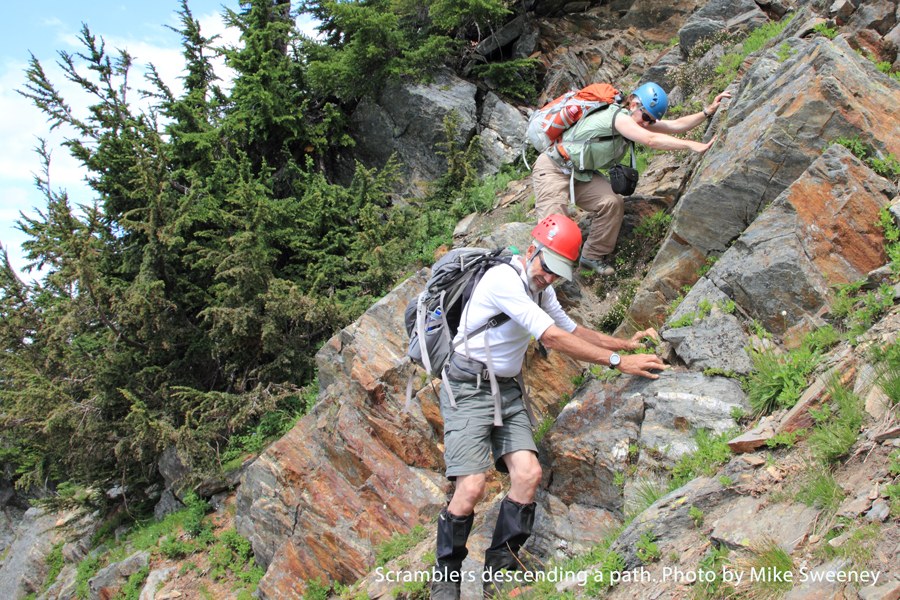
by Mindy Roberts, Mountaineers Safety Committee Chair
You’re done with the “hard part” of the trip. It’s all downhill now. On a trail. You’re tired. So is the rest of the team. Suddenly someone lets out a surprising loud “ouch!” He heard a pop. And now, your car seems so far away.
An unusual occurrence? Yes and no. About 100 incidents are reported each year, but we offer over 10,000 visitor days to outdoor destinations. And it turns out that slips, trips, and falls produce the most incidents experienced on Mountaineers outings. Fortunately, most of these incidents are minor, with a little rest and ice needed, rather than a visit to the doctor.
So how do we prevent slips, trips, and falls? Well, reading this article is a great step, and the reason the Safety Committee wrote this article. Leaders and participants report incidents, and the Safety Committee compiles the results and looks for patterns. We need your help to get the word out. Simply voicing this pattern when you’re on trips could help.
The Mountaineers Safety Committee has tracked incidents since 2006. Leaders report incidents through activity reports. Participants report incidents the trip surveys. The Safety Committee includes representatives from every branch and program The Mountaineers offers – over 20 committee members review incident reports, fill in any missing details, then scrub the reports of names before publishing in the year-end report the following spring.
You can learn a lot about the challenges we face in the backcountry by looking at the patterns in the incidents over the years. The annual reports are accessible through the safety website at www.mountaineers.org/about/safety. Read up on the annual recommendations as well, drawn from the insights of leaders and participants. And definitely check out the Safety Highlights Blog, featuring real trip reports.
We often get asked whether or not a certain situation warrants an incident report by the leader or by participants in your trip surveys. Anything involving medical attention or a call to 911 should definitely be reported. My rule for everything else is that if you ask yourself the question, the answer is probably yes. No incident is too small, including the knee boo boo that warranted a pirate bandage or the trip leader who forgot the brownies and nearly started a riot. Let us sort them out.
On one of the first trips I led to Mt. Shuksan, I remember one of the climbers thanking me for getting us to the summit. I remember telling him that he got himself there, but more importantly, we were only halfway through the trip and I imagined most incidents happen downhill when we’re tired and least expect it. We now have the data!
We also know that most incidents occur in the busy summer months when more people enjoy the outdoors. Whether you are a leader or a participant, remind your team of this pattern of slips, trips, and falls — say it out loud. Safety is everyone’s responsibility, and it’s important that everyone speaks up.
We don’t yet know what the low snow conditions of 2015 will mean in terms of the number and type of incidents outdoor enthusiasts face, since the last time we had this little snow was 2005 before incident reporting began. You can count on hard snow setting up very early and snow-covered talus fields featuring post-holing much earlier in the season this year. You can probably expect wildfire smoke in August as well.
 Mindy Roberts
Mindy Roberts